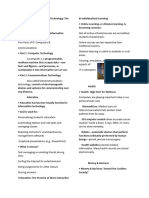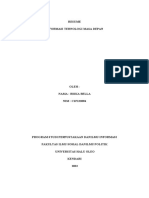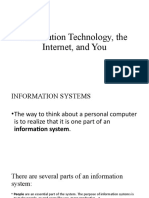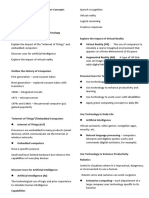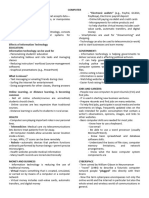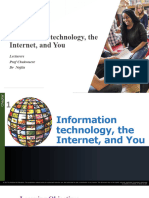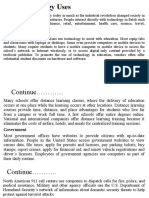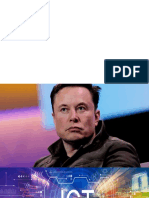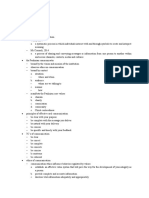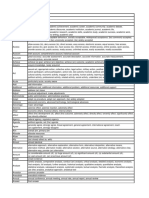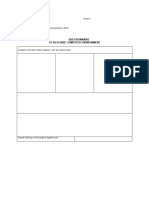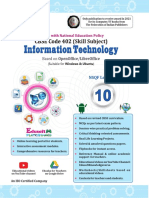0% found this document useful (0 votes)
31 views48 pagesIntro To IT
This document provides an introduction to information technology. It discusses how computing and the internet have affected various aspects of life such as education, health, finance, and personal life. It describes how computers process raw data into useful information and the key concepts of how computers work, including hardware and software. The document outlines the different types of computers from supercomputers to mainframes to microcomputers. It also explains networks and how information technology will continue to evolve in various fields.
Uploaded by
delaben1537Copyright
© © All Rights Reserved
We take content rights seriously. If you suspect this is your content, claim it here.
Available Formats
Download as PDF, TXT or read online on Scribd
0% found this document useful (0 votes)
31 views48 pagesIntro To IT
This document provides an introduction to information technology. It discusses how computing and the internet have affected various aspects of life such as education, health, finance, and personal life. It describes how computers process raw data into useful information and the key concepts of how computers work, including hardware and software. The document outlines the different types of computers from supercomputers to mainframes to microcomputers. It also explains networks and how information technology will continue to evolve in various fields.
Uploaded by
delaben1537Copyright
© © All Rights Reserved
We take content rights seriously. If you suspect this is your content, claim it here.
Available Formats
Download as PDF, TXT or read online on Scribd
/ 48
